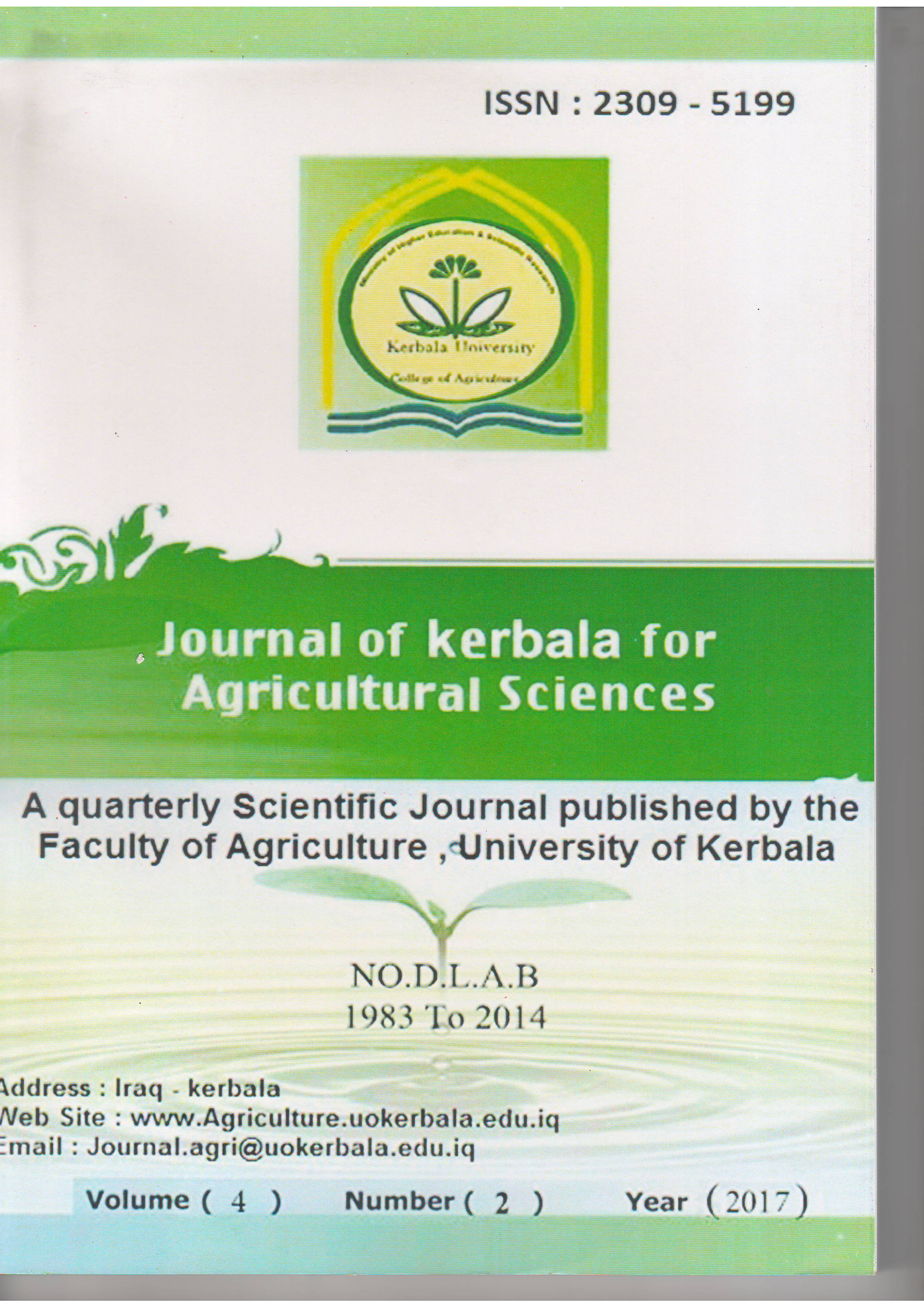Effect of irrigation water of the main out full with addiation Gypsum Phosphate on growth of barley ( Hordeum Vulgare )
DOI:
https://doi.org/10.59658/jkas.v4i2.219Keywords:
: main out full drain, irrigation, salinity, SAR, Gypsum PhosphateAbstract
Two experiments was conducted. The first experiment is laboratory, by using the Columns techniques to evaluate the effectiveness of Gypsum Phosphate as a chemical mending. The second experiment is a biological to evaluate the efficiency of Gypsum Phosphate to improve the qualities of the soil cultivated flora of barley which irrigated by the saline water of the main out full at Abu-Ghariab location. 0,50 and 100 ton . ha-1 of Gypsum Phosphate was added at two replicate then irrigated water given at 5000 m3. ha-1. Results of chemical analysis tests of the soil columns (colums technique) showed and proved using Gypsum Phosphate efficiency as good chemical mending at saline water as important calcium resource, as well as Gypsum Phosphate addition in columns technique leads to reduce EC and SAR in soil to a limit value which allowed for optimal growth of barley plants, also leads to reduce absorption of Sodium Na+ by plants roots and thus improve the most nutrient absorption, which reflected positively in increasing plant growth. Also increasing of Calcium concentration in columns Cause led to the removal of agreater amount of sodium out of the roots zone and thus improving the qualities of soil chemical,physical and fertility. Results also indicate that the optimal level of Gypsum Phosphate addition was at level 50 ton.ha-1. And the higher level of it was unsignificant economically.
Downloads
Published
How to Cite
Issue
Section
License
Copyright (c) 2017 Copyright (c) 2024 is the Author's article. Published by the Journal of Kerbala for Agricultural Sciences under a CC BY 4.0 license

This work is licensed under a Creative Commons Attribution 4.0 International License.
Licensing Terms
All articles are published under a Creative Commons License and will be directed to the Creative Commons Attribution 4.0 International License (CC BY 4.0) That permits use, distribution, and reproduction in any medium, provided the original work is properly cited. This license also allows the work to be used for commercial purposes.
Use by both non-commercial and commercial users
This content is licensed under a Creative Commons Attribution 4.0 International (CC BY 4.0) license, permitting use by both non-commercial and commercial users. Individual users may access, download, copy, display, and redistribute the articles to colleagues, as well as adapt, translate, and text- and data-mine the content, subject to the following conditions:
- The author's moral rights, including the right of attribution and the right to protect their work from derogatory treatment, are respected.
- Where content in the article is identified as belonging to a third party, users must ensure that any reuse complies with the copyright policies of the owner of that content.
- If the article content is reused for research or educational purposes, users should maintain a link to the appropriate bibliographic citation, including the DOI and a link to the published version on the journal's website.

